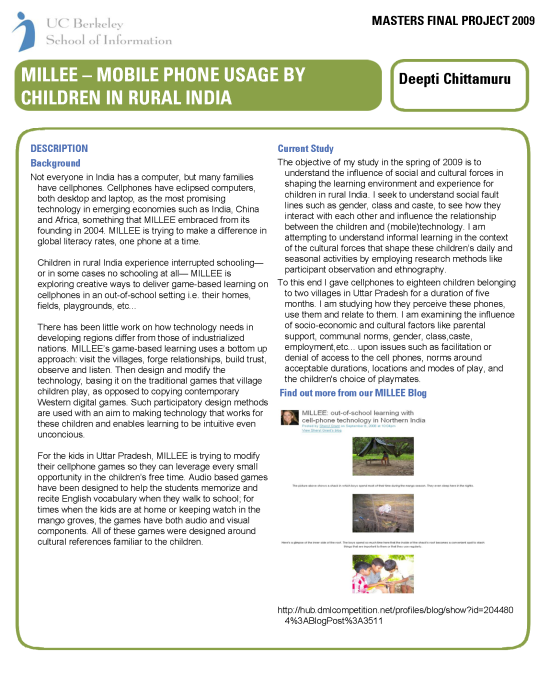MILLEE: Social Dynamics of Mobile Phone Use by Children in Rural India
Providing access to English literacy is perceived to be a very effective means of socially and economically empowering the disadvantaged rural Indian population. While the Indian public education system has vastly improved over the decades, it still falls far short of providing quality education for children in rural India. Furthermore, many rural children are unable to attend school because of work obligations to their families. Mobile phones have tremendous penetration even in poor Indian villages and show great potential as a platform for education that is complementary to the school system. To make effective use of the cellphone as a vehicle to facilitate learning, in the case of working children it needs to happen outside the classroom. Learning applications need to be adapted for enabling spontaneous use by the children and support by their parents. It is important to identify appropriate times and places for learning, which mesh with children’s routines. Designing such informal learning applications requires deeper understanding of the socio-economic and cultural forces at play in the children’s environments. This paper summarizes the results of three rounds of field-work aimed at understanding, the socio-economic and cultural forces that influence cellphone use by children in rural villages of North India.










